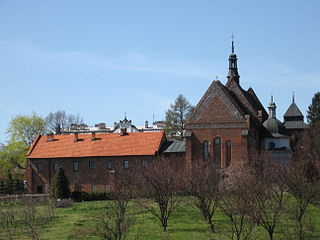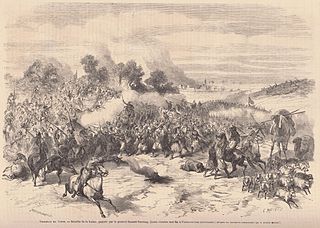
Sadok Sassi, nicknamed "Attouga" is a Tunisian former footballer who played as a goalkeeper for Club Africain and the Tunisia national team.

Enfidha is a town in north-eastern Tunisia with a population of approximately 10,000. It is visited by tourists on their way to Takrouna. It lies on the railway between Tunis and Sousse, approximately 45 km northeast of Sousse and a few kilometres inland from the Gulf of Hammamet. The nearby Enfidha – Hammamet International Airport opened in 2009, serving charter flights from several European countries.
Club Sportif de Hammam-Lif or CSHL is a football club from Hammam-Lif in Tunisia. Founded in 1944, the team plays in green and white colours. Their ground is Stade Bou Kornine, which has 15,000 seats.

Salakót is a traditional lightweight headgear from the Philippines that is commonly used during pre-colonial era up to the present day, used for protection against the sun and rain. Every ethnolinguistic group in the archipelago has their own variant, but they are all usually dome-shaped or cone-shaped and can range in size from having very wide brims to being almost helmet-like. They are made from various materials including bamboo, rattan, nito ferns, and bottle gourd. The tip of the crown commonly has a spiked or knobbed finial made of metal or wood. It is held in place by an inner headband and a chinstrap. The salakot hat also influenced the pith helmet used by European colonizers. Salakot or also spelled as salacot in Spanish and salacco in French is the direct precursor to the pith helmet widely used by European military forces in the colonial era.
Rentap, also known as Libau Rentap, was a warrior and a recognized Iban hero in Sarawak during the reign of the first White Rajah, James Brooke. His praisename, Rentap Tanah, Runtuh Menua translates from the Iban language as 'Earth-tremor, World-shaker'. His famous and frequently quoted slogan was "Agi idup, Agi ngelaban" which translates into "Still alive, still fighting".

Estosadok, sometimes spelled Esto-Sadok or Estosadoc is a rural locality under the administrative jurisdiction of Adlersky City District of the City of Sochi in Krasnodar Krai, Russia, located on the Mzymta River, 4 kilometers (2.5 mi) upstream from Krasnaya Polyana.

The French conquest of Tunisia occurred in two phases in 1881: the first consisting of the invasion and securing of the country before the signing of a treaty of protection, and the second consisting of the suppression of a rebellion. The French protectorate of Tunisia that was established lasted until the independence of Tunisia on 20 March 1956.
Abu al-Abbas Ahmad ibn Muhammad ibn al-Wannan was a Moroccan poet. His fame was based on his poem al-Shamaqmaqiyya, a survey of traditional Arabic culture in which he described the customs of the early Arabs. He is said to have been a member of an Arab family from the Tuwāt in southern Algeria and Morocco. Ibn al-Wannan also described himself as Ḥimyari, and claimed descent from the Anṣār.
Sadok is a village in the administrative district of Gmina Chodecz, within Włocławek County, Kuyavian-Pomeranian Voivodeship, in north-central Poland.

The Church of St. James in Sandomierz, also known as the Shrine of Blessed Sadok and 48 Dominican martyrs, Monastery of Dominicans, Shrine of Our Lady of the Rosary, is one of the oldest brick churches in Poland and the second oldest Dominican monastery in Poland. This church is a unique indirect form of Romano-Gothic style. The Roman ceramic decorations on the outside gabled walls are unusual and beautifully done. The stained glass windows inside are particularly beautiful, and date from 1910 to 1918.

Sadok and 48 Dominican martyrs from Sandomierz were Roman Catholic, Dominican martyrs killed by Mongols during the Second Mongol invasion of Poland in 1260. As homage to the deaths of these martyrs, Polish Dominican friars were given special dispensation allowing the usage of red belts in their habits.

The RusSki Gorki Jumping Center is a ski jumping venue located in the Esto-Sadok village on the northern slope of Aibga Ridge in Krasnaya Polyana, Russia.
Omrane Sadok was a Tunisian boxer. He competed in the boxing events at the 1960 Summer Olympics.
Zadoc is a given name, originally from Hebrew, meaning "just" or "righteous". It was originally the name of several biblical figures.
The men's large hill individual ski jumping competition for the 2014 Winter Olympics in Sochi, Russia, was held on 14–15 February 2014 at RusSki Gorki Jumping Center in the Esto-Sadok village on the northern slope of Aibga Ridge in Krasnaya Polyana.
The women's normal hill individual ski jumping competition for the 2014 Winter Olympics in Sochi, Russia, was held on 11 February 2014 at RusSki Gorki Jumping Center in the Esto-Sadok village on the northern slope of Aibga Ridge in Krasnaya Polyana. Women competed in ski jumping for the first time in the history of the Winter Olympic Games.
The men's large hill team ski jumping competition for the 2014 Winter Olympics in Sochi, Russia, was held on 17 February 2014 at RusSki Gorki Jumping Center in the Esto-Sadok village on the northern slope of Aibga Ridge in Krasnaya Polyana.

Aziza Othmana (1606-1669) was a Tunisian princess belonging to the Mouradites dynasty.

The Mejba Revolt (1864–65) was a rebellion in Tunisia against the doubling of an unpopular poll tax imposed on his subjects by Sadok Bey. The most extensive revolt against the rule of the Husainid Beys of Tunis, it saw uprisings all over the country and came close to prompting military intervention by Britain and France. The revolt was suppressed with great brutality and the government became ever more seriously indebted to foreign creditors, backed by European governments, until it was finally unable to resist French occupation in 1881.









